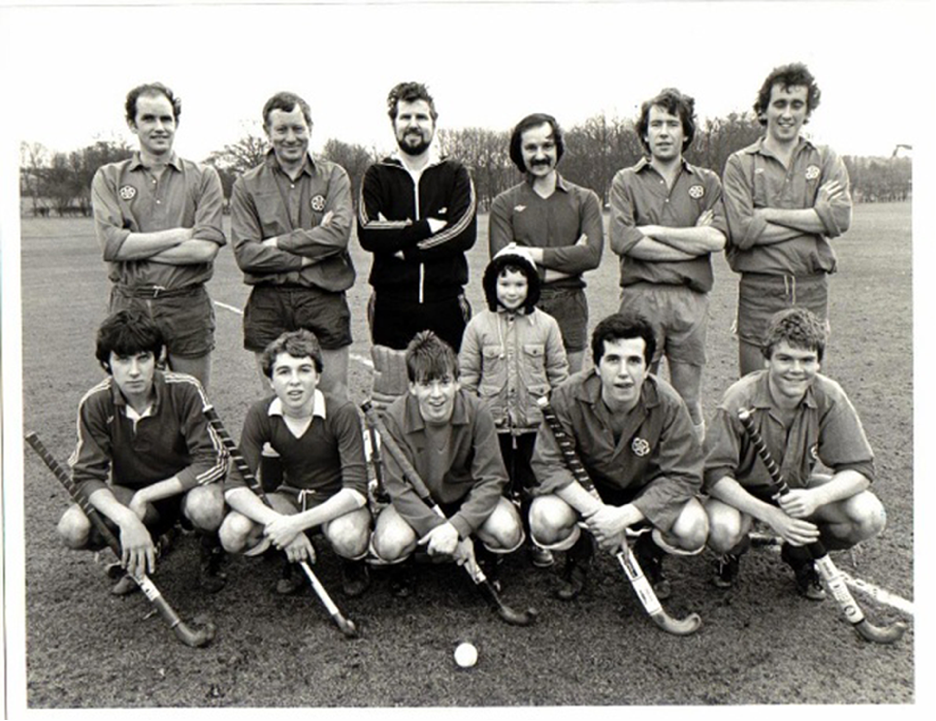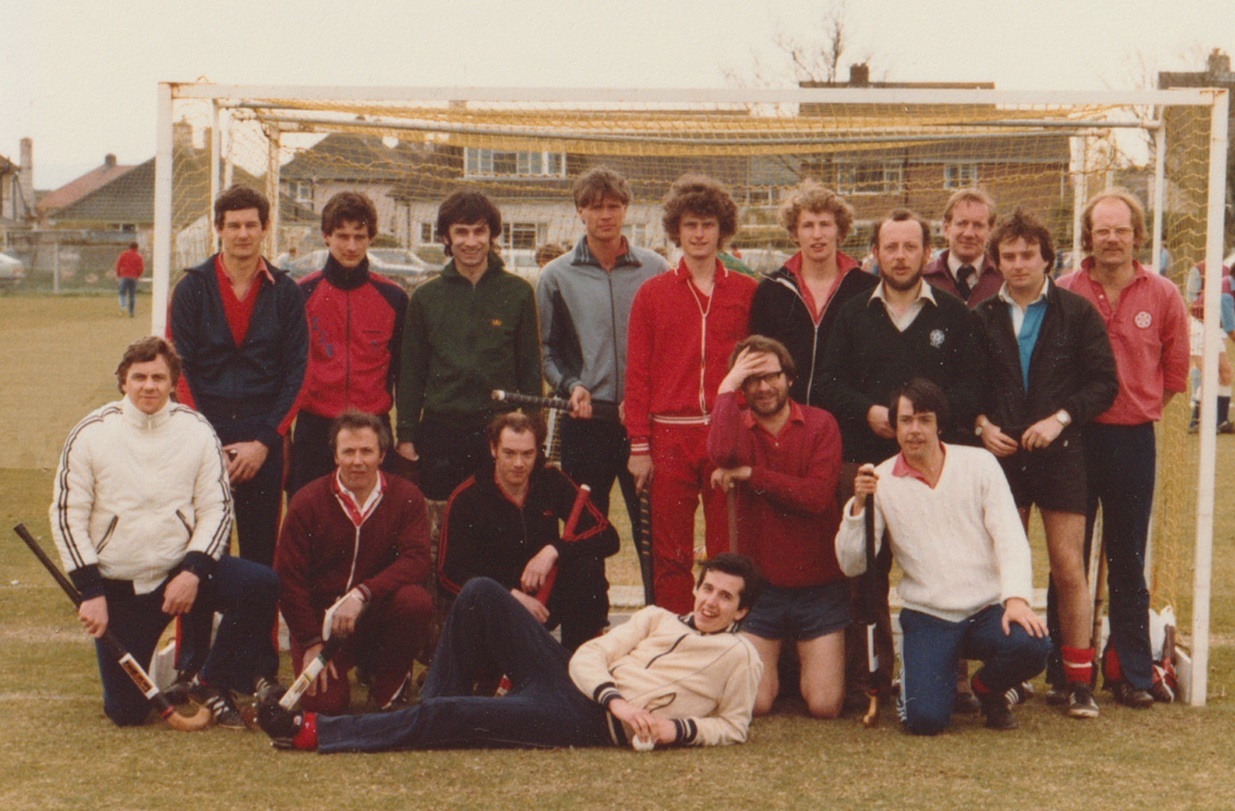- Chapter 12: Personalities in the Modern Game
- Intro
- CHAPTER 1: The Early Years 1891 to 1914
- CHAPTER 2: Standardization of the Rules. 1915 to 192
- CHAPTER 3: The "Golden " Years. 1920’s & 1930’s
- CHAPTER 4: THE EARLY CLUBS - PRE 1939
- CHAPTER 5: Personalities of the Early 20th Century.
- CHAPTER 6: THE POST WAR RECOVERY YEARS
- CHAPTER 7 : "THE PERENNIALS”
- CHAPTER 8: POST THE SECOND WORLD WAR YEARS
- CHAPTER 9: Rectory Park.
- Chapter 10: The Modern Game - The Last 50 Years
- CHAPTER 11: League Hockey
- Chapter 12: Personalities in the Modern Game
- Intro
- CHAPTER 1: The Early Years 1891 to 1914
- CHAPTER 2: Standardization of the Rules. 1915 to 192
- CHAPTER 3: The "Golden " Years. 1920’s & 1930’s
- CHAPTER 4: THE EARLY CLUBS - PRE 1939
- CHAPTER 5: Personalities of the Early 20th Century.
- CHAPTER 6: THE POST WAR RECOVERY YEARS
- CHAPTER 7 : "THE PERENNIALS”
- CHAPTER 8: POST THE SECOND WORLD WAR YEARS
- CHAPTER 9: Rectory Park.
- Chapter 10: The Modern Game - The Last 50 Years
- CHAPTER 11: League Hockey
12. Chapter 10: The Modern Game - The Last 50 Years
While the basic format of the game remained largely unchanged during the Club’s first 75 years, in recent years there has been many major changes; the introduction of league hockey in the 1960s/70s that took over from purely “friendly” fixture lists; The move from grass playing surfaces to artificial pitches, ASTRO surfaces, technology improvements and changes in the shape of the stick, ball and GK equipment; rule changes (removal of roll-ins, offside, the introduction of self-pass, five meters and obstruction rules, have opened up the game), the introduction of Indoor Hockey has allowed the game to improve further, in particular stick-work and players skills.
In the early 1960’s the Sutton Club was turning out six team on a regular basis and block fixtures were organised by our Fixture Secretary with clubs of a similar nature, Olton, Edgbaston, Wolverhampton, Lichfield, Harborne, Womborne and North Staffs with 1st 3rd and 5th playing either at home or away with the 2nd, 4th and 6th playing the alternative away or home. In 1969 in a bid to introduce league hockey in the Midlands with promotion and relegation, the “Percentage League” was formed. This allowed clubs who played each other provided there were a sufficient number of teams, then, their results could be tabulated. It did not take many seasons for most local clubs to get adopted into a league, initially without promotion and relegation.

The Weymouth Hockey Club had organised an Easter Hockey Festival since 1962 and by the time Sutton started to support this competition it was now entertaining 40 clubs with teams travelling from the European Continent to take part. So in 1968 Weymouth Hockey Club was providing 130 games of hockey on 7 grass pitches on the Redlands Sports Ground and Sutton Coldfield Hockey Club, under the name of “The Strollers” became regular visitors for many Easters to the Weymouth Easter Festival, entering two sides. The members would be leaving business early on the Thursday afternoon and return late on the following Monday evening, staying initially at the Kenora Hotel, which was a little above a Guest House, as it had a bar. However, due to the a little exuberance by some members in the bar in the early hours of the morning the Club was forced to look for alternative accommodation at the Rembrandt Hotel. Some members brought tents and camped out on the beach. It was a very well-run Festival with the Weymouth Hockey Club using the Redlands Community Sports Hub to put up 8 grass pitches, which allow all teams to play two games of 25 minutes each way daily on the Friday, Saturday and Monday, with the Sunday being kept open for an exhibition game played on the No.1 pitch by two invitation sides.
The Sutton Club had two teams playing daily, with Sunday being a relaxed – recovery day, after some serious drinking on the Saturday evening. There was one such Sunday in 1976 when Peter Bell, who had been a regular umpire at Weymouth for a number of years and was a keen photographer, suggested late on the Saturday evening that tomorrow at 6 AM he would go for a stroll before breakfast around Redipole Lake and photograph the Cetti’s Warbler, a bird rare to the UK. To Peter’s surprise Willie Cardel and the Gorings (John & Steve) joined him and a few others on a beautiful warm sunny morning, to look for the warbler, we heard the bird, which live up to its skulking reputation proving too difficult for our early morning “twitchers” to see. Nevertheless, moving off to our regular Sunday lunch at the Half Moon public house in the heart of Hardy Country, where some serious darts were again organised by Willie Cardel and John Goring with the opportunity to drink some real Ales.

Front Row, L to R: - Richard Quainton; Willie Cardel; n/k; Graham Patterson; Les Sweeting.
Lying down: - n/k.
The more affluent members would book a table for dinner on the Friday or Saturday evening at the rather exclusive “Sea Cow” restaurant on the sea front, who employed a competition Chef who travelled the world in his quest for the acknowledgement of his gastronomic cuisine and as the name of the restaurant suggests, sea foods were the house specialty, in particular “A Sea Food Platter for Two”.
The Kings Heath Exiles by John Robinson
My introduction to Hockey was in 1974, when Andy Beach invited me to make up the numbers in a 4th team at Kings Heath. I had played a lot of football at school and afterwards in the Liverpool Sunday League but had not played hockey before. At Kings Heath I was handed a hockey stick and it was soon established that, although I had a sufficiently competitive nature, I knew nothing of the rules and lacked basic stick skills; therefore, the sensible position for me was on the right wing. From this position I was able to exploit what I felt was my only virtue, a modicum of speed, often crossing the ball to the back of the ‘D’ for the centre forward to hit it past the opposing goalkeeper.
I became a ‘regular’ in the team and during my time at Kings Heath, Andy and I were also joined by a number of Sutton cricketers. Chris Barber and Roger Coombs, both accomplished Sutton hockey players, Jamie Ross, Warwick Tidy and Tony Malek all came to play hockey at ‘The Heath’!
All good things come to an end and in 1980 the breathalyser had become the traffic policeman’s choice of weapon. Because the Kings Heath fixture list included a large number of venues that were on the south and west side of Birmingham, the journey home frequently took us through the city centre and we were no longer able to enjoy the post-match social exchanges in the traditional way. Reluctantly, the players that made up Kings Heath’s Sutton Coldfield Branch decided that it would be more sensible to play their hockey from a Sutton Coldfield base. This would mean negotiating only relatively few routes through Birmingham; we joined SCHC at Rectory Park Club the following season.
This sudden influx of cricketers and return of former players was not universally welcomed by some of the senior SCHC members. Nevertheless, a side consisting of the returning cricketers, hockey club veterans and two or three promising youngsters became established as the Sutton Coldfield Hockey Club’s 4th team. Jamie Ross was eventually promoted a higher side and the 4th team flourished under a succession of captains that included Bill Cardall, myself and Neil Houghton in that order. By the time I became 4th team captain, I felt that I had learned enough of the game’s skills to take more responsibility; I therefore, moved myself from right wing to centre forward. This gave Chris Barber the opportunity to unselfishly feed the ball to me, so that I could score, rather than claiming the glory for himself. When Neil Houghton became captain, he obviously felt that I had lost a bit of pace and I finished my Hockey playing career at right half.
The 4th team usually left early for the away matches having arranged to meeting at a hostelry en-route. It was usual for the senior members to order the drinks at the bar whilst the schoolboys melted quietly into the background to complement their education by sipping their halves of ‘shandy’. The second team, who usually played at the same venue, would frequently observe 4th team trooping out of a roadside pub to continue their journey and would hurl abuse as they drove past.
Our side was one of ‘mixed abilities’. Our schoolboy players, many of whom went on to be play in the Club’s first team, must have benefitted hugely from being able to play alongside such skilful performers as Chris Barber, Neil Houghton and Roger Coombs. From me they might have learned about commitment, but not much else! Camaraderie was very high and with the characters that we had in the side there was no shortage of humorous exchanges to amuse us during our games. ‘Backache’ Lockton was a great Sutton Hockey Club character who welcomed the arrival of the ‘crowd from Kings Heath’. As our goalkeeper, he used to feign agony when retrieving the ball from the back of the net after the opposition had scored. We subsequently christened all our ‘seasoned’ goal keepers with the nickname ‘backache’ and two spring to mind. ‘Backache’ Jordan was teacher who refused to wear a facemask until a shot from Nottingham centre forward loosened some teeth and almost dislocated his jaw. ‘Backache’ Rice was always in trouble with his father for not studying for his accountancy exams; he was however, well-known at the Plough and Harrow in Roughley, where he had made 250 consecutive appearances!
Andy Beach was a funny man, a public school-educated estate agent who was loved by everyone who played cricket or hockey alongside or against him. He was short and chubby and his shorts used to fit his waist, but had clearly been made for someone with much longer legs! As a left-handed player he held the stick in a reverse or ‘cackie-handed’ grip that made it easier to play the ball with a reverse stick. This slightly awkward playing style produced many moments of amusement for his teammates. Andy’s antics and his comments before, throughout and after the game, sometimes directed at individuals, though never hurtful, made sure that however disappointing the result was, we always saw the lighter side. For three years Andy wrote match reports on the 4th team games that were published in an unsuspecting “Sutton Coldfield News”. He used to describe the outstanding moments substituting, for the senior players, names taken from the England 1966 World Cup winning team and Moore, Hurst, Peters, Ball, Styles, Charlton, Hunt, Wilson etc. all featured regularly in 4th team games.
For a number of years during the 1970’s the British Army’s 39th Heavy Artillery based in Germany returned to the UK for a week’s hockey tour, staying in the Army Barracks in Rectory Road to play the Club on the Wyndley ASTRO before returning to the Pavilion for tea and a social evening, consisting mainly of serious drinking games.
I recall one such game, although Andrew Beach was not playing hockey as he had been with the 1st team at cricket, but was invited by the Sutton Hockey Captain to join in the hockey team boat-race against the Army team. Andrew was only too willing to start at No 1 and easily put the Sutton side in a commanding lead but with some slow drinkers to follow the visitors were about to take the lead, where they made a tactical substitution switching their No. 11 to the sub’s bench and had Andrew in as last man, quickly finished his second pint with Sutton clear winners, but the team were disqualified for playing an illegal player, not for playing the same player twice. However, it was agreed that the result was null and void and that the competition was to be re-run, which the Army won with a much superior drinking squad.
Throughout the 1970’s & 80’s the President Xl would play a morning game on the grass pitch on the far side of the cricket square against the 1st Xl which was very well supported by a considerable number of members, who had the opportunity to meet up with players of the past. Very few such matches were ever cancelled even when there had been a good covering of frost as they would play push hockey with the umpires were instructed to penalize players for hitting the ball.
In 1978 when Andrew Waters was first elected President, he introduced a tot of Malt Whiskey as a stimulant at half time, which his wife known affectionally as ‘Lady Di” would carry the tray of drinks across the cricket square to the players and umpires. On one particular, New Year’s Day, Di had the assistance in 1981 of Marion Yeomans, who was the wife of Trevor Yeomans the 1st team captain. Two trays of the club’s liquor glasses were filled for the 22 players and the 2 umpires with the “Pres’s” chosen malt. Marion suddenly became aware that there were no glasses for her or Di to have a morning tipple on what was a very cold January 1st morning. That was quickly rectified by Marion who decanted some whisky from every glass to fill two larger glasses, when the two ladies suddenly became aware that play had stopped for the half time brake. This resulting in the Marion and Di having to gulp down the liquor and carefully carry the drink trays out to the players and officials. Back in the warmth of the Club House Marion and Di preparation the “Tatties and Neeps” for the players consumption after the game and it was clearly visible when the game was over that the two Ladies were clearly feeling the effect of their tipple(s).
Not all jokes work out right, in particular on one such New Year’s Day, when the Club captain wanted all 3 Club’s senior goalkeepers to play in the game, so he asked one of the umpires to red card Ian Mason, when he next intercepted a ball in his “D”. This the umpire did, red carding Ian who was furious for being treated like that and walked out of the game and Club, never to return. Very sad, a joke that went badly wrong, as Ian’s pride of never having previously been red carded in his hockey career.
In 1991 the Club had now been playing for 100 years and to mark the occasion a Ball was held in a marque, which the Club had hired and erected in front of the Pavilion, which included a bar, tombola and a live dance band. It was a great event even though it rained and members and their guests had to make a 5-meter dash from the pavilion to the marque. Because of vandalism that both the Park and the Club were suffering from time to time it was agreed that the Club would have two volunteers to stay the night as protection, they were easily found when they could have free drinks through the night.

